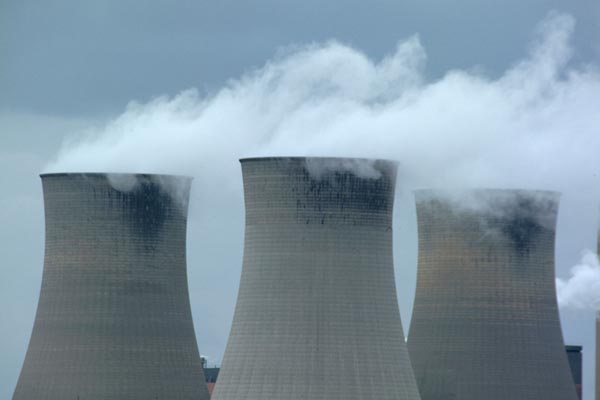It’s our annual membership drive! If you like this post, please consider becoming a supporting member of rabble.ca today.
We have now crossed a dangerous line in the global build up of greenhouse gases. Greenhouse gas concentrations have moved from the pre-Industrial Revolution level that never exceeded 280 parts per million (ppm) to a new daily average of 400 ppm, reached last week.
Over a period of the last million years, CO2 never exceeded 280 ppm (based on actual readings of atmospheric chemistry from Antarctic ice-core data). The last time greenhouse gases reached 400 ppm was three million years ago. Put simply, humanity has now changed the chemistry of our atmosphere to replicate pre-historic levels — a time when no humans existed.
Concentrations of GHG are a very different measurement than emission rates. Concentrations have a very long lag time and will not be able to be decreased except over centuries, while emission rates can go down overnight. It is critical to start reducing emissions, because existing concentrations mean that we will see warming over the next 100 years from today’s emissions.
CO2 levels are monitored daily at Mauna Loa Observatory on the island of Hawaii. When the monitoring station was set up in 1958, CO2 levels were at 317ppm. The rise to 400 ppm was not expected so soon. Meanwhile, the Canadian government has joined in a global commitment to hold concentrations of greenhouse gases to levels that would avoid allowing global average temperatures to rise by 2 C. Scientists have marked that wide red hazard line in a band between 425-450 ppm.
Avoiding 2 C is critical because it represents a danger zone. Some refer to it as a point of no return — or a “tipping point” to self-accelerating global warming, the so-called “runaway greenhouse effect.” The actual tipping point might be 2.5 C, or it could be 1.5 C. Two degrees represents a consensus of scientists, but no scientist I know is sanguine about two degrees. It is certainly not a safe zone.
The most recent International Energy Agency (IEA) World Energy Outlook includes some number crunching. If all the world’s known reserves of fossil fuels were to be used, the climate would move the world to a non-habitable state.
In fact, the IEA has said that to avoid an increase of 2 C, at least two-thirds of known fossil-fuel reserves must stay in the ground until at least 2050.
The Over-rated Fossil Fuel Economy
This finding has led to a new and potentially powerful financial calculation. A major new report from the U.K., “Unburnable Carbon 2013: Wasted Capital and Stranded Assets,” engaged the talents and expertise of Sir Nicholas Stern through a collaborative research project involving Carbon Tracker and the London School of Economics and Political Science’s Grantham Research Institute for Climate Change and Environment.
The result is a new concept — the “carbon bubble.” The essence of their work is this: a great deal of the stated value of stock exchanges around the world is in unburnable fossil fuels. The level of capital expenditure in developing those reserves over the next decade would amount to $6.74-trillion in wasted capital — developing reserves that simply cannot be burned.
The report calls for ratings agencies to update their approach to verifying the financial health of stock markets and individual companies. If assets being used to offset liabilities are assets that can never be used, then large parts of the economy — now seen as credit-worthy — are over-valued.
The consequence for financial markets is obvious. Meanwhile, the report notes that the carbon intensity of the New York and London stock markets is actually increasing; New York by 37 per cent over two years and London by seven per cent over two years.
The creative notion that Moody’s and other credit raters might be able to do through financial valuations what governments have so far failed to do — bring Big Oil to its senses — is certainly tantalizing. What is encouraging is the extent to which the notion of a “carbon bubble” as financial risk is catching on.
Perhaps that’s what we need — a clear financial consequence our brains can comprehend. Maybe we should keep the focus on the financial threat, while acknowledging the irony that it may be easier to provoke change through large multinationals and stock exchanges than through thoughts of our children’s dismal future.
Photo: freephoto.com




